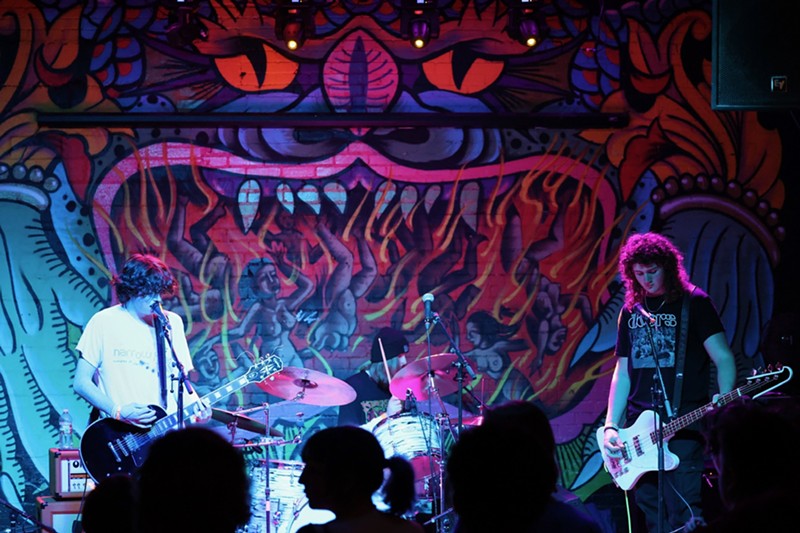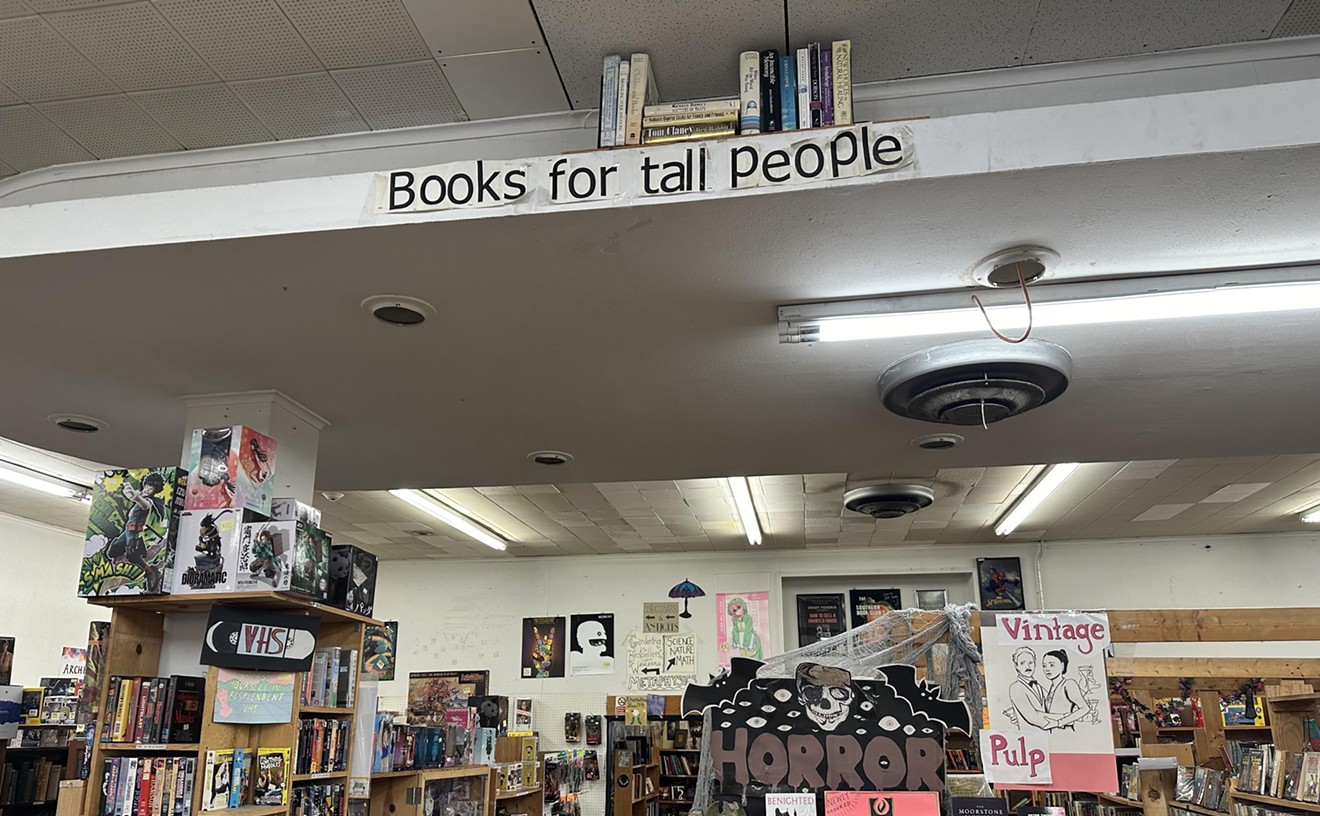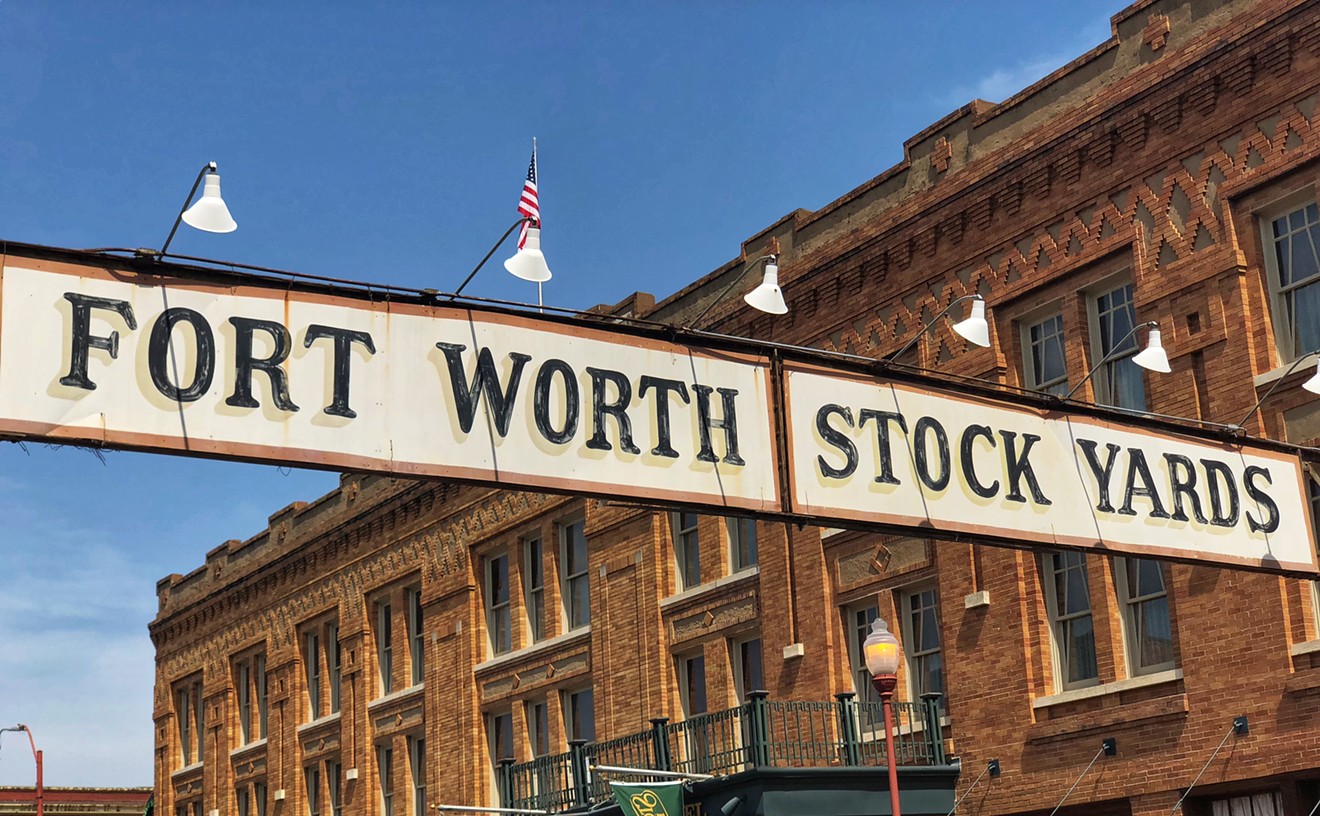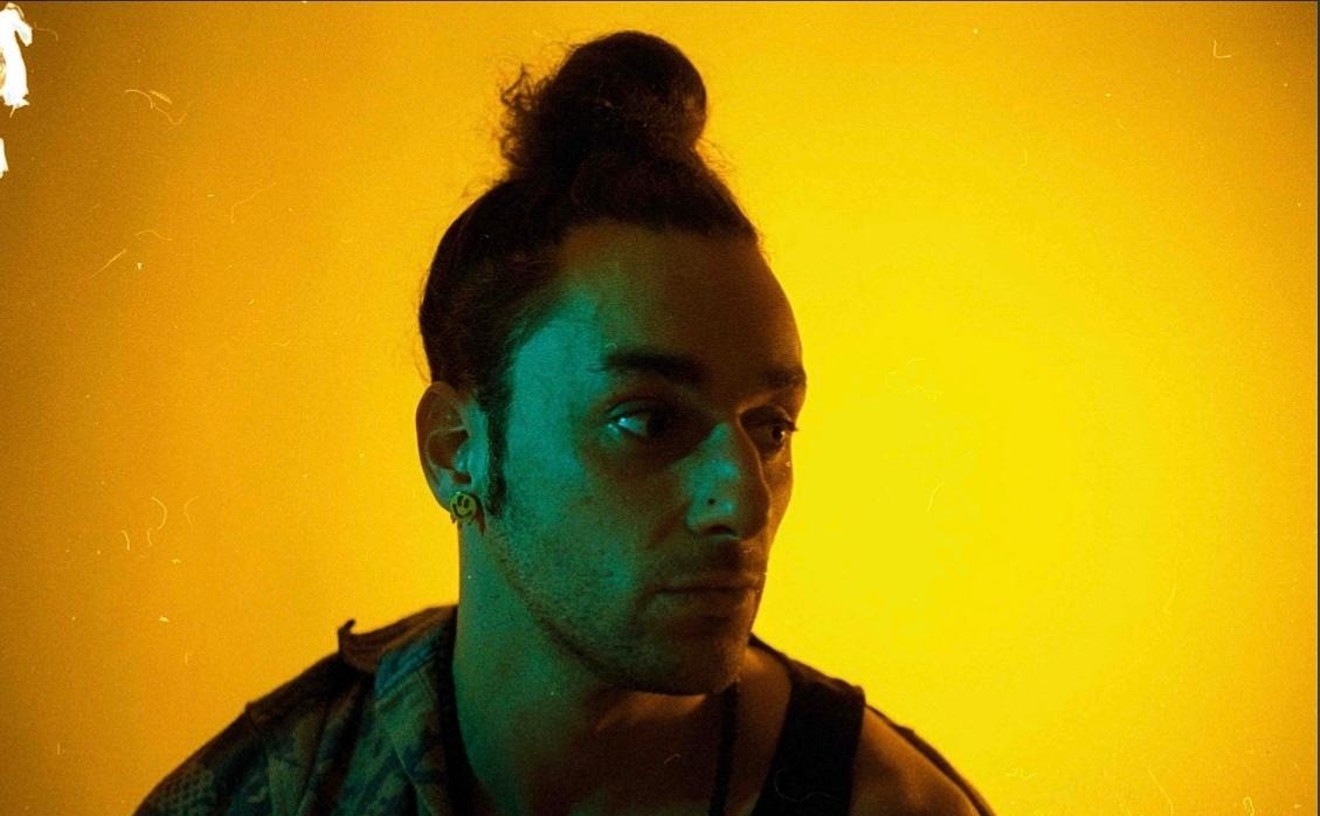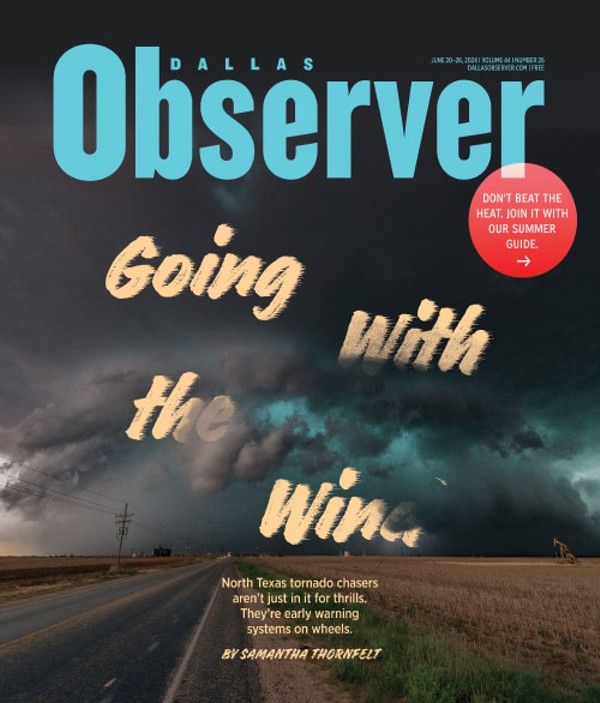But these parents are raising another generation of rebellious, flannel-wearing teens, even if they favor Travis Scott to Nirvana. Culturally and musically, virtually nothing is the same now as it was in 1990. But stylistically, you can barely tell the difference.
Trent Marrs sees the uptick in '90s aesthetics quite clearly. The 29-year-old University of Texas graduate owns Vagabond Vintage, with locations in Dallas, Fort Worth and Denton.
“Since the dawn of vintage, people have been roughly 25 years behind,” he says.
At Vagabond, Marrs knows how to supply the demand. Luckily, the supplies are easy on the wallet.
“It is seemingly pretty cheap to put together,” he says of the look. “You have denim, which there is an insane amount of, and you have flannels, which are super cheap.”
Marrs took over the business from his father, and postulates that many customers are following trends set by their parents.
“I think kids in their late teens and 20s are inherently interested in times around when they were born,” Marrs says, “interests planted by their parents who were probably having fun back in the '90s. I know my parents molded me an insane amount.”
While each generation might pull from the last, Marrs points out a throughline to an ever-evolving fashion world.
“You can see a lot of the chunky stripe motifs on clothes from the ‘60s in clothes from the ‘90s,” he says. “Denim from the ‘60s was probably even more popular in the ‘90s than it is today. From the ‘40s-’60s-’90s-today, people have always worn plaid sweaters, overalls and denim. They just styled it differently and maybe had a slightly different attitude.”
More than the music, Marrs points to the attitude from ‘90s culture lasting more than anything.
“I think a lot of it is just angst personified,” he says. “Some kids will always have that grunge attitude.”
Eddie Vedder was a pioneer of that grunge attitude. Last month, he gave a signature howling vocal performance in the bass-thumping, fist-pumping title track of Pearl Jam’s latest record, Dark Matter.
Even though this release is nearly 33 years removed from their iconic debut, Ten, the band is still wildly commercial. They recently wrapped up a nationwide arena tour, with an East Coast stadium run planned for September leading up to two headlining nights at Vedder’s Ohana Festival to close.
Pearl Jam obviously aren't in their prime, but their music hasn’t suffered.
The band made their name on grunge, but Dark Matter is far closer to a KISS record than to Nirvana. The same is true of the remaining “Drab Four,” a name given to the founding grunge bands of the early ‘90s: Pearl Jam, Nirvana, Soundgarden and Alice In Chains.
Soundgarden’s 2012 comeback record, King Animal, plays with an early Zeppelin energy and the polish of something that a Badmotorfinger-era Chris Cornell would’ve scoffed at.
Contemporaries of the Drab Four, the Smashing Pumpkins’ last album, ATUM, was a high-concept, sprawling rock opera. CYR preceded it in 2020, with Billy Corgan turning the band into a synth-pop four-piece.
As the founding fathers of grunge distance themselves from that sound in their new material, there’s virtually no scene for modern grunge music, either.
When was the last time you heard a new grunge song? 1996? A Google search for "new grunge music" yields a Reddit post asking why the genre has died.
It’s true. Grunge as we knew it is dead. Pearl Jam might have a new record, but there will be no grime when they play to tens of thousands at Fenway Park. Long gone are the days of Vedder closing shows with a stage dive into a sea of flannels and denim jeans.
Sure, Vedder won’t be diving anytime soon, but the audiences that would catch him still dress the same.
Look no further than Isaiah O’Keefe, who plays guitar in a shoegaze band called Death By Monkey. Onstage, it looks like his bright red hair has never been combed. His sweaters are always stretched, his jeans always two sizes too big. Whether a mosh pit or a magazine, O’Keefe would look right at home in 1990s Seattle.
But that’s the thing. Isaiah O’Keefe is 16.
“When I started playing guitar I was inspired by Nirvana ,as most people are,” he says. “It always inspires me to be creative in a very expressive way in music, art or anything.”
His band released a new EP, The Past Few Weeks, in April. It plays like an early Sonic Youth record. Live, it teeters on the edge of more aggressive bands like Helmet. The Cobain inspiration never quite manifests itself in O’Keefe’s music, but it couldn’t be more obvious in his style. His bandmates, drummer Spencer Frye and bassist Jayc Roberts, share similar sensibilities: baggy blue jeans, prickly flannel shirts, unkempt hair.
Chad DeAtley used to dress just like them. He started playing bass in 1988, eventually forming Doosu, DFW’s premier grunge act, in 1994.
DeAtley recalls buying Mother Love Bone’s album, Apple, and seeing them live in Chicago, and meeting guitarist Stone Gossard, who pointed him to his previous band called Green River. From there, he discovered Mudhoney and started buying anything from SubPop. DeAtley was fully immersed in the scene.
But what exactly was that scene?
“It’s a big mix of classic rock, metal and punk. It’s dirty and definitely doesn’t care what you think,” DeAtley says. “That’s what it started out as, but as soon as everyone started calling it grunge it became something much simpler and definitely stupider.”
Some of the earliest notable references to “grunge” came through the exact pipeline that DeAtley experienced. In 1987, SubPop founder Bruce Pavitt began inserting the term into press releases for Green River and Mudhoney alongside words like “dirty” and “sludge.” It quickly became a blanket term for bands coming out of the greater Seattle area. By the time Nevermind and Ten came out, both the city and the sound were undeniable.
“One of the coolest things for me about all of those bands was that I noticed that they all dressed like me and all of my friends,” DeAtley says. “When I think of grunge fashion it means flannels, long johns, combat boots and long scraggly hair.”
Smells Like Teen Fashion
Before it became popularized, that fashion was one of the most impactful ways that DeAtley and his friends were able to express themselves.“It was the epitome of not caring what people thought,” DeAtley says. “We were just being comfortable. When Nirvana blew up, the media and corporations had to define it and extract the elements that they could sell. You like this band Nirvana, you must like flannels and long johns and messy long hair. The world decided that’s ‘the look.’ It was an anti-fashion for my friends, and once it got defined, we were out.”
DeAtley and his friends thrived on the perceived exclusivity that underground music and fashion brought them. They were rebels, this was their rebellion. As soon as it entered the mainstream, they had to rebel again.
“We shaved our heads and moved away from dressing like that. We move away from everything that has been bastardized,” DeAtley says. “You get all these bands that follow the template and are ready to capitalize on this new wave. It gets watered down and laughable. Corporate. All of us who were there from the beginning and loved those guys because they were real and like us have to separate ourselves from this plastic atmosphere.”
DeAtley continued to play music, though. Doosu released three studio albums between forming in 1994 and disbanding in 2003. In 2019, the band reunited for a benefit concert for late musician Jayson Wortham. Recently, they played a fundraiser for Course of Empire drummer Chad Lovell, who has been in a coma since 2019, and at Good Records for Record Store Day 2024.
“If you go by my definition of what grunge was initially, we were definitely a sort of grunge,” he says. “Doosu was everything at once and gave zero shits about fitting into a genre, which is what all the original ‘grunge bands’ used as a template.”
Now a father of two sons, DeAtley says he’s noticing elements of ‘90s fashion in the way kids dress these days, though he describes it as more of a ‘post-grunge’ look. That said, he’s still never gotten on board with using the term to make blanket statements on the era in which he grew up.
“If what I defined as grunge is a thing, then I live my entire life like that,” he says. “Don’t give a shit about what anybody thinks and give all of your influences an equal opportunity to display themselves in your art.”
DeAtley might’ve accidentally defined exactly what grunge is, whether he likes it or not. When he was picking out Green River and Mudhoney records, he fed off their musicality and seeming admission of his culture. The way he wrote and performed songs with Doosu reflected their influence.
Similarly, a 16-year-old Isaiah O’Keefe can scroll through photos of Kurt Cobain and Layne Staley and emulate exactly what he sees thanks to retailers like Vagabond Vintage. Neither O’Keefe or Marrs were around for the prime of grunge like DeAtley was, but they share a symbiotic connection in the same way that a “Come As You Are” shares with a dingy flannel.
It’s all the same, really. Or maybe it’s not. Listen to what you want. Dress how you want. Grunge wants you to make of it whatever you want.
“As I’ve been saying,” DeAtley continues. “The term ‘grunge’ is fucking stupid.”

